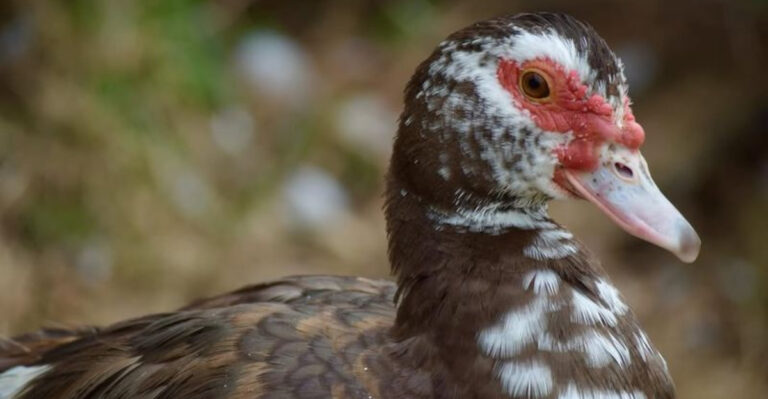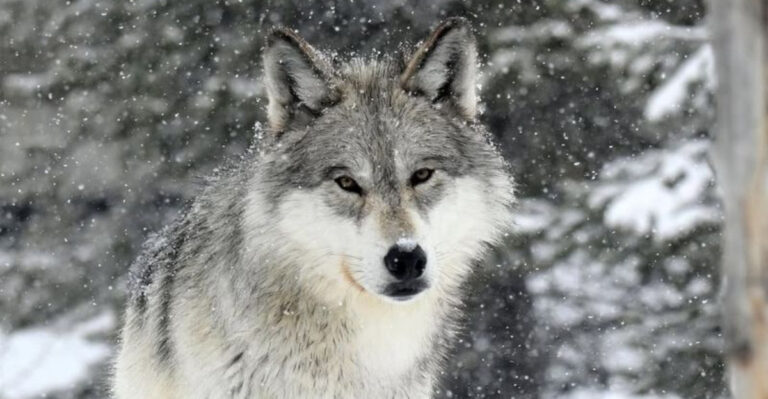7 Early Warning Signs Of Snakes In Your Yard (And 7 Ways To Make It Less Appealing To Them)
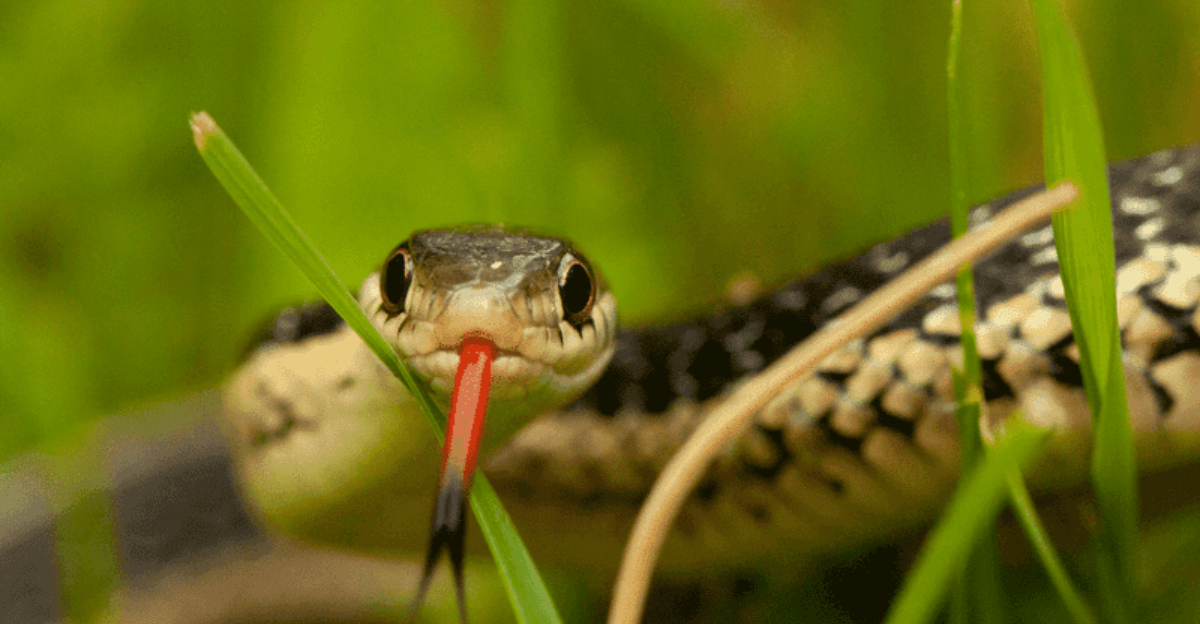
Finding a snake in your yard can be startling, but knowing the warning signs can help you stay one step ahead of these slithery visitors. Snakes are actually looking for food, shelter, and safety – just like any other creature.
By recognizing early indicators of snake activity and making simple changes to your yard, you can create an environment that’s less inviting to them.
1. Shed Snake Skin

Translucent, papery remains scattered around your property are like neon signs announcing ‘snakes were here.’ Snakes shed their skin several times yearly as they grow.
The intact shed skin often resembles a ghostly outline of the snake itself. Finding one means a snake has recently claimed your yard as shedding territory, and might still be nearby.
2. Mysterious Narrow Trails In Grass Or Soil
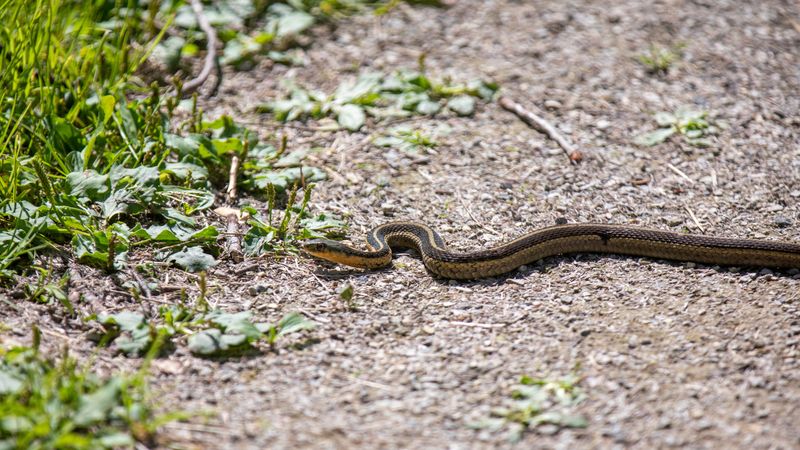
Snakes create distinctive pathways as they travel. Unlike the random patterns of other wildlife, snake trails appear as smooth, continuous depressions in tall grass or soft soil.
These S-shaped tracks typically measure 1-3 inches wide. Fresh trails indicate recent activity, while well-worn paths suggest regular snake traffic through that specific area of your yard.
3. Unusual Pet Behavior
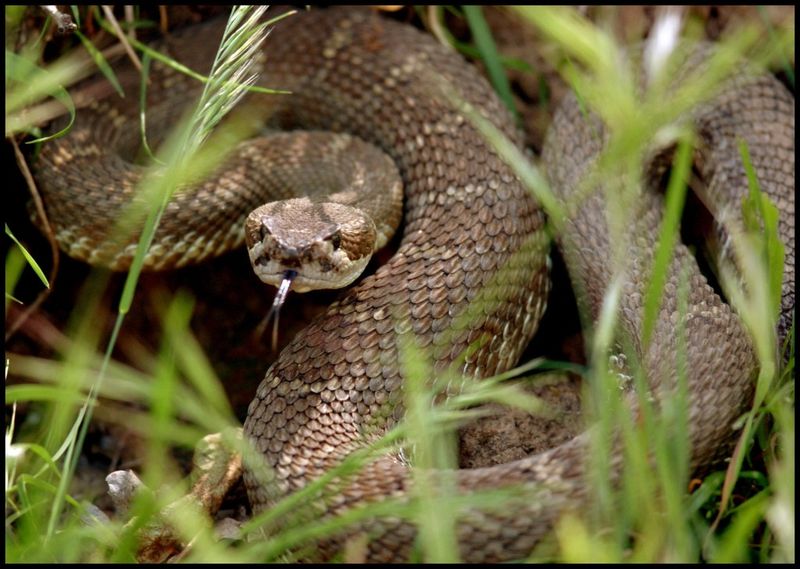
Your four-legged friends often detect snakes before you do. Dogs might bark persistently at seemingly nothing in tall grass or under structures. Cats may stalk, paw at, or fixate on specific areas.
Watch for unusual alertness, refusal to enter certain yard areas, or agitated behavior outdoors. Animals’ heightened senses pick up snake scents and movements that humans easily miss.
4. Unexplained Rodent Decrease
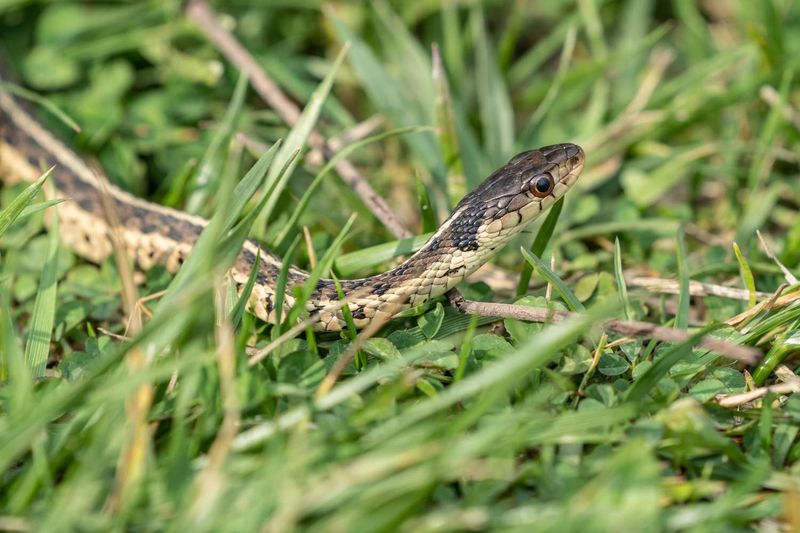
Suddenly noticing fewer mice, voles, or rats around your property? Nature abhors a vacuum – especially when it comes to predator-prey relationships.
A snake might have moved in to feast on your resident rodent population. While this natural pest control seems beneficial, it signals snake presence. Most common yard snakes primarily hunt small mammals, making rodent-rich areas prime snake territory.
5. Bird Nest Disturbances
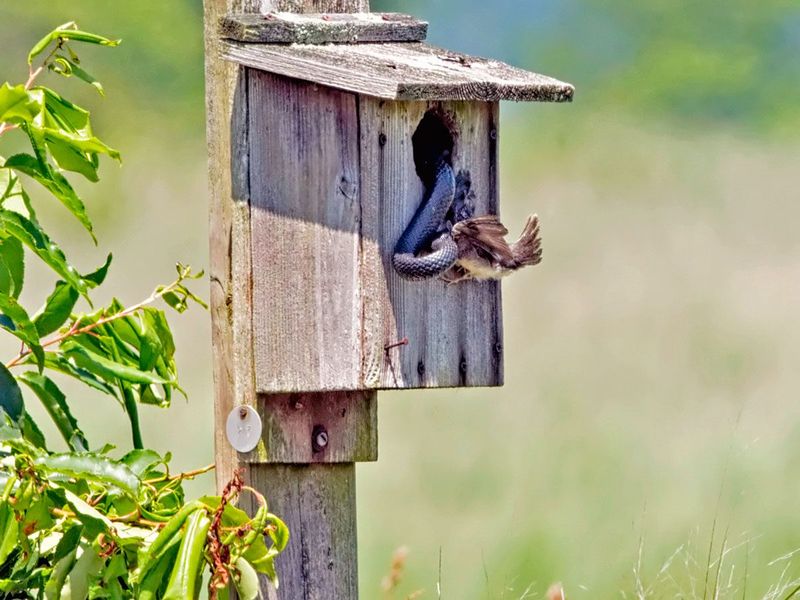
Low-hanging bird nests showing signs of disturbance – without the typical raccoon or cat destruction patterns – might indicate snake activity. Snakes leave nests relatively intact while removing eggs or nestlings.
Ground-nesting birds may abandon nests entirely. Listen for unusual bird alarm calls focused on specific areas of your yard, as birds will vocally protest when they spot snakes near their territories.
6. Droppings With Hair Or Bones
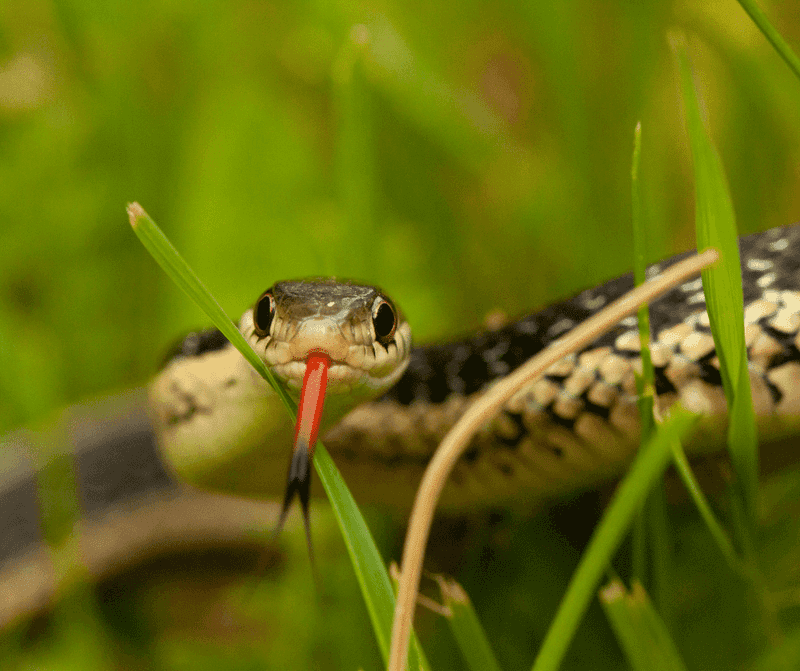
Snake droppings look distinctly different from other wildlife waste. They’re typically dark, tubular deposits with tapered ends, often containing visible hair, feathers, or tiny bone fragments from their prey.
Fresh snake scat may have a white cap of uric acid. Finding these distinctive droppings, especially in sheltered areas or along walls, provides clear evidence that snakes are hunting and living in your yard.
7. Mysterious Disappearance Of Eggs

Missing chicken eggs without shell fragments scattered around points to snake theft rather than raccoon or possum raids. Snakes can swallow eggs whole, leaving no mess behind.
Similarly, disappearing frog or toad eggs from garden ponds suggests water snake activity. If you keep chickens or have a pond, unexplained egg vanishing acts are strong indicators that a snake has discovered your yard’s food resources.
8. Remove Debris And Woodpiles

Snakes adore hiding in jumbled spaces that offer protection from predators and weather extremes. Old lumber stacks, brush piles, and unused garden equipment create perfect snake condominiums.
Elevate necessary woodpiles at least 12 inches off the ground. Store lawn equipment on racks rather than directly on the ground. Regular yard clean-up eliminates these attractive shelter options and forces snakes to seek accommodation elsewhere.
9. Keep Grass Short And Trim Vegetation
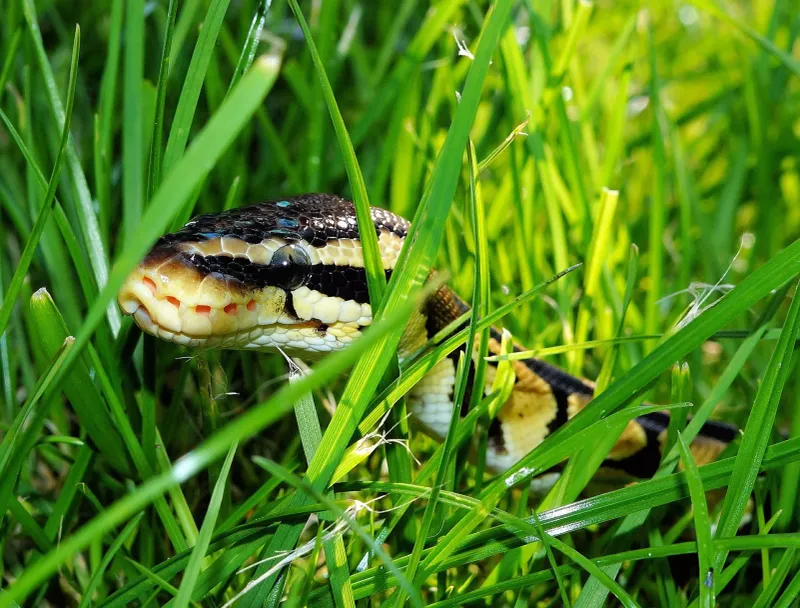
Tall grass and overgrown shrubs provide excellent camouflage and hunting grounds for snakes. Regular mowing maintains grass around 3-4 inches – short enough to spot snakes easily while reducing their hiding spots.
Trim bushes so branches don’t touch the ground. Clear dense groundcover like ivy near your home’s foundation. This maintenance creates exposed areas that make snakes feel vulnerable to predators, encouraging them to move along.
10. Eliminate Water Sources
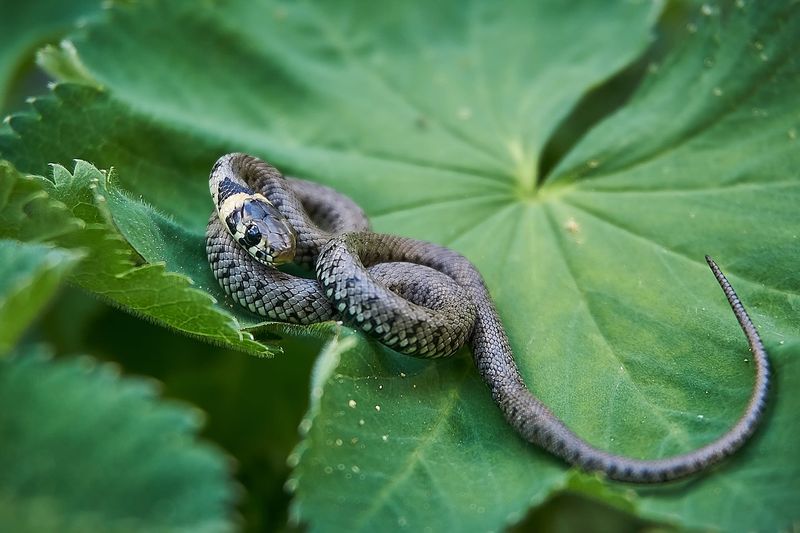
Standing water attracts both snakes seeking hydration and amphibians that snakes hunt. Fix leaky outdoor faucets and ensure proper drainage around your property.
If you have decorative water features, consider adding moving water elements like fountains, which most snakes avoid. Empty kiddie pools, buckets, and plant saucers after rain. Reducing available water makes your yard significantly less hospitable to thirsty serpents.
11. Seal Entry Points Around Structures
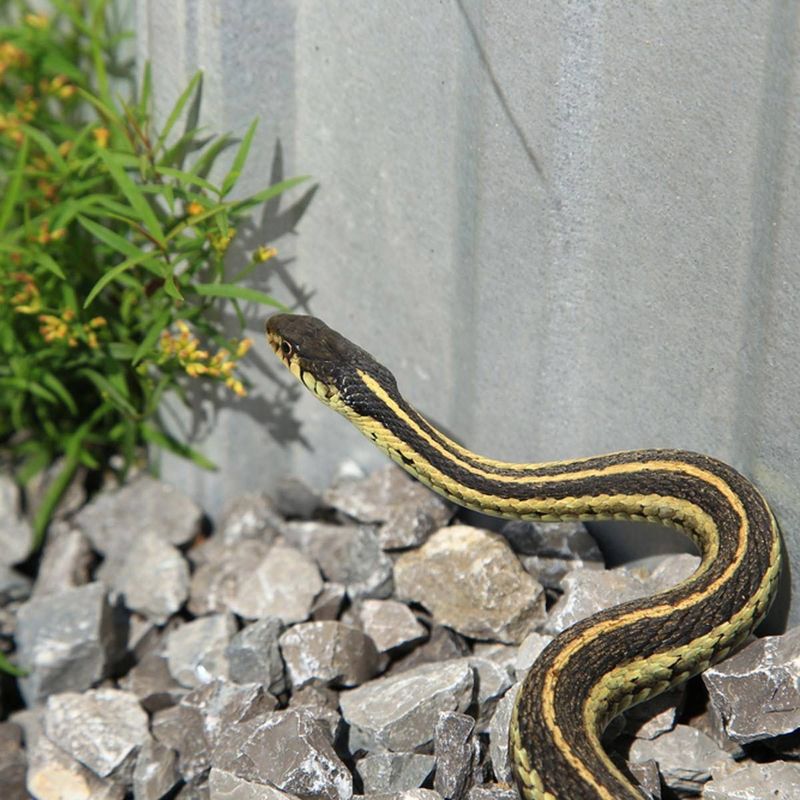
Snakes can squeeze through remarkably small openings – as little as ¼ inch for some species. Inspect your home’s foundation, garage, and outbuildings for cracks, gaps around pipes, and damaged vent screens.
Seal openings with expandable foam, steel wool, or hardware cloth. Pay special attention to spaces under doors and around windows. This physical barrier approach prevents snakes from finding shelter in your structures.
12. Install Snake-Proof Fencing

Specialized snake barriers can protect specific areas like gardens, play spaces, or chicken coops. Effective snake fencing should be solid or have mesh smaller than ¼ inch, extending 30 inches above ground and 6 inches below.
The fence must angle outward at 30 degrees at the top to prevent climbing. While expensive for entire properties, this targeted approach creates safe zones in yards where complete snake exclusion isn’t practical.
13. Control Rodent Populations
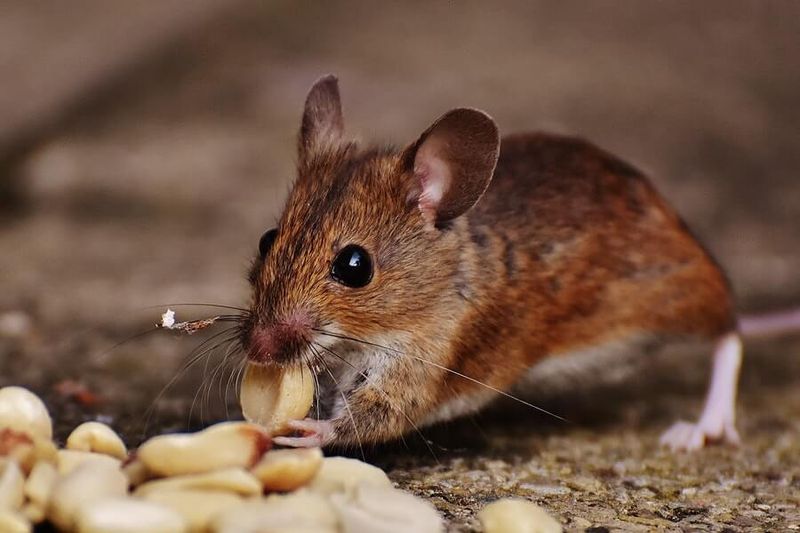
Mice, rats, and voles are snake magnets – the equivalent of ringing a dinner bell for hungry serpents. Address rodent problems through traps, removal of food sources, and sealing entry points to your home.
Keep bird seed in sealed containers and don’t allow it to accumulate on the ground. Properly store pet food indoors. When the rodent buffet closes, snakes will move on to hunting grounds with more reliable meals.
14. Use Natural Repellents Strategically
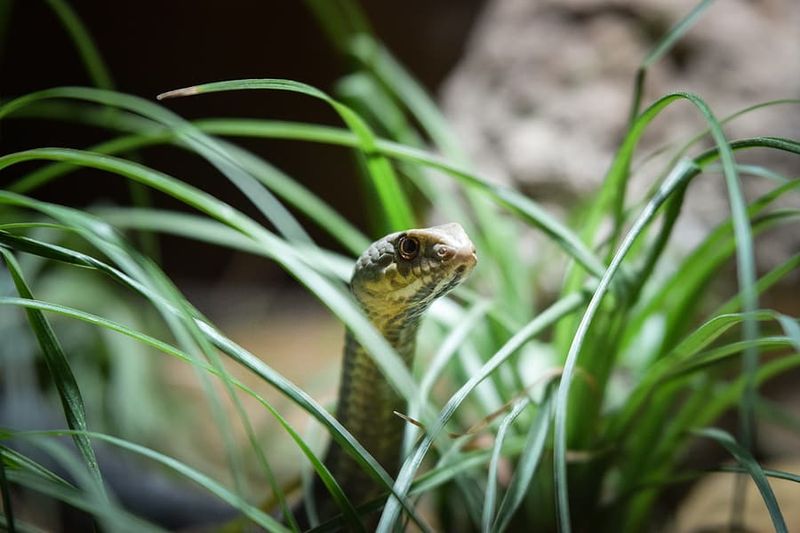
While no repellent is 100% effective, some natural substances may discourage snake visits. Sprinkle sulfur powder or spread cedar mulch around perimeters of specific areas you want to protect.
Certain essential oils like cinnamon, clove, and eugenol may also create barriers snakes prefer to avoid. Reapply these natural deterrents regularly, especially after rain. Remember that repellents work best as part of a comprehensive snake prevention strategy.



